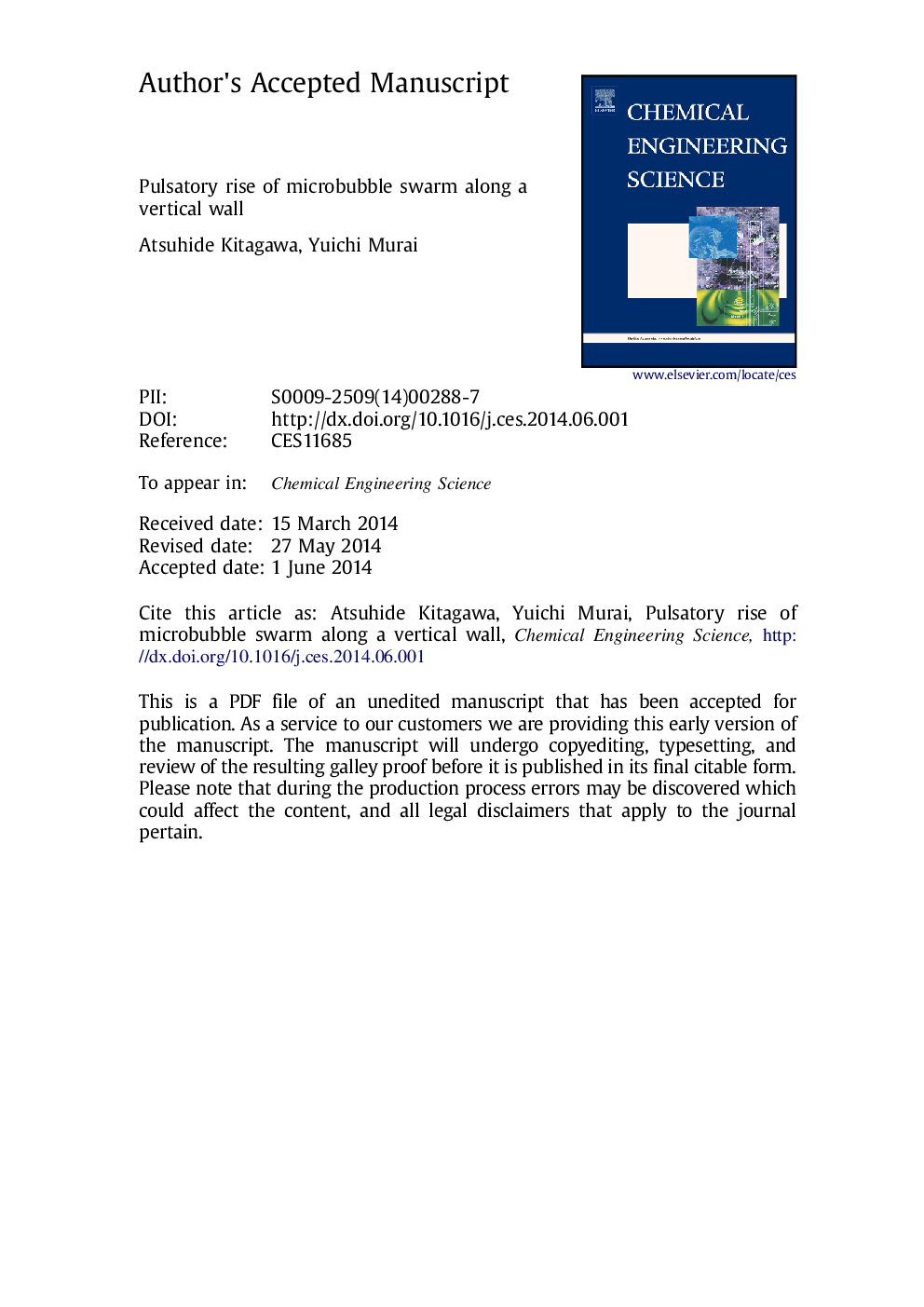| Article ID | Journal | Published Year | Pages | File Type |
|---|---|---|---|---|
| 6591125 | Chemical Engineering Science | 2014 | 38 Pages |
Abstract
Based on the experimental finding that microbubble swarms dramatically promote heat transfer from a vertical heated wall, despite their potentially adiabatic nature, tests of microbubble fluid mechanics in the isothermal state are performed to clarify the unique motion characteristics of microbubble swarms. At constant bubble flow rate, the microbubble swarm shows a significant pulsatory rise along a vertical flat wall, particularly for small bubbles. Particle tracking velocimetry applied to the microbubbles shows that a two-way interaction between the microbubbles and the liquid flow self-excites the pulsation during their co-current rise. The sequence consists of the following processes: (i) increase in the bubble number density close to the wall as a result of the liquid velocity gradient driven by the microbubbles themselves; (ii) wave generation inside the microbubble swarm to induce the pulsatory rise of the swarm; and (iii) amplification of the waves, which results in void-bursting motion in the final stage.
Related Topics
Physical Sciences and Engineering
Chemical Engineering
Chemical Engineering (General)
Authors
Atsuhide Kitagawa, Yuichi Murai,
